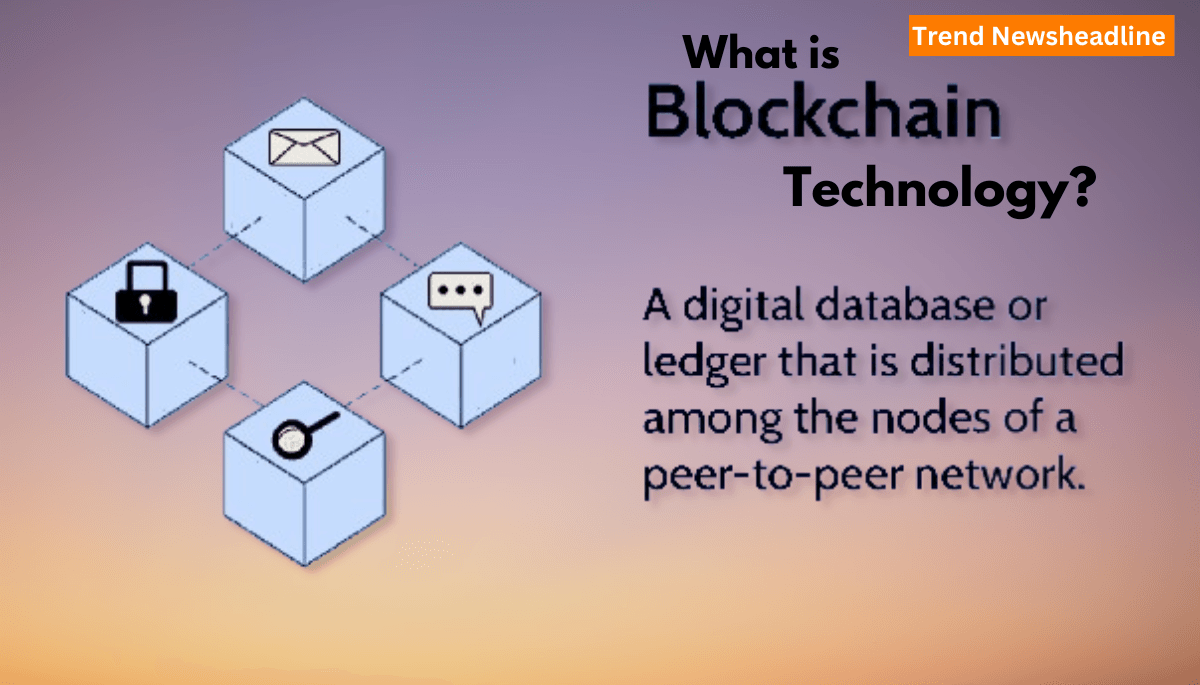What is Blockchain Technology? 7 Examples That Define Its Power.

This technology was first introduced in 1981 by Stuart Huber and W. Scott Stornetta in 1994. Before understanding what is blockchain technology, we should know why it is used and in which areas it can be used. The ‘National Strategy on Blockchain’ was brought by the Ministry of Electronics and Information Technology under the Government of India.
Blockchain technology has transformed the way we think about data, transactions, and trust in the digital age. But what is blockchain technology and why is it being called revolutionary? In this article, we will explore the concept, its functionality, and real-world examples that demonstrate its potential.
What is Blockchain Technology?
In a corporate network, blockchain technology is a sophisticated database structure that facilitates transparent information sharing. This technology was first introduced in 1981 by Stuart Huber and W. Scott Stornetta in 1994. The first real-world application of 3rd option was found in the year 2009 i.e. in 2019 with the launch of Bitcoin. Now let us also know why it is called boxing.
The result of this is that the information in the box is collected in a group and it is also called a block. Every block has limited storage capacity, so when a block gets filled, it gets attached to the previously filled block. In this way, changes become one and a half and that is why it is called boxing.
How Does Blockchain Technology Work?
How exactly does blockchain technology work? Recent years have seen many businesses around the world integrating blockchain technology. Is this a significant change or a simple addition? The blockchain landscape is still young and has the potential to be revolutionary in the future, so let’s start by understanding this technology.
Blockchain technology is widely used in various industries, including cryptocurrencies like Bitcoin, supply chain management, and smart contracts. Its decentralized nature ensures trust, reduces fraud, and enhances efficiency. Understanding what is blockchain technology is essential as it is reshaping how data and transactions are handled in today’s digital world. Blockchain is the foundation for a secure, transparent, and innovative future in technology.
Blockchain is a decentralized digital ledger system that records transactions securely across multiple computers. Unlike traditional databases, it operates without a central authority, ensuring transparency and data integrity.
Each “block” in a blockchain contains transaction data, a timestamp, and a cryptographic hash of the previous block. These blocks are linked in a sequential “chain,” making the information nearly tamper-proof.

7 Examples That Define the Power of Blockchain Technology
1. Cryptocurrencies: The Foundation of Blockchain
The most popular use case of blockchain is in cryptocurrencies like Bitcoin and Ethereum. Blockchain ensures secure, transparent, and decentralized transactions without the need for intermediaries. This has revolutionized the financial sector, enabling faster and cheaper cross-border payments.
2. Supply Chain Management
Blockchain technology enhances supply chain transparency by recording every product journey stage. Companies like Walmart and IBM use blockchain to track food products from farm to shelf, ensuring safety and authenticity.
3. Smart Contracts
Smart contracts are self-executing contracts with predefined rules written into code. Platforms like Ethereum utilize blockchain technology to automate agreements, reducing the need for intermediaries in industries like insurance, real estate, and legal services.
4. Healthcare Records Management
Healthcare organizations are leveraging blockchain to store patient data securely. This ensures data privacy while allowing authorized parties to access records efficiently. For example, Medicalchain uses blockchain to create a single, immutable version of a patient’s medical history.
5. Voting Systems
Blockchain technology is redefining voting by ensuring transparency, security, and fraud prevention. Blockchain-based voting systems allow citizens to vote from anywhere while maintaining the integrity of election results. Estonia is a pioneer in this domain, using blockchain for its e-governance initiatives.
6. Decentralized Finance (DeFi)
DeFi platforms revolutionize traditional banking by providing decentralized financial services like lending, borrowing, and trading without intermediaries. Powered by blockchain technology, DeFi protocols such as Uniswap and Aave are gaining global popularity.
7. Intellectual Property Protection
Blockchain offers a reliable solution for protecting intellectual property rights. Artists, writers, and musicians can register their work on a blockchain to establish ownership and prevent plagiarism. Platforms like Audius use blockchain to empower creators.
Benefits of Blockchain Technology
Understanding what is blockchain technology becomes more evident when we look at its numerous benefits:
- Transparency: All transactions are visible on the ledger, ensuring accountability.
- Security: Data is encrypted and tamper-proof, reducing the risk of fraud.
- Decentralization: Eliminates the need for central authorities, empowering users.
- Efficiency: Streamlines processes, reducing time and costs.
Challenges Facing Blockchain Technology
Despite its potential, blockchain technology faces certain challenges:
- Scalability: High transaction volumes can lead to slower processing times.
- Energy Consumption: Some consensus mechanisms, like PoW, require significant energy.
- Regulation: The decentralized nature of blockchain poses challenges for governments.
- Adoption Barriers: Lack of awareness and technical expertise hinder widespread adoption.
The Future of Blockchain Technology
The applications of blockchain are still in their infancy. From enhancing security in IoT devices to enabling decentralized social networks, the future holds immense possibilities. As industries continue to innovate, what blockchain technology can achieve will likely exceed current expectations.
>>Read this also:- What is Chatgpt? How Does it Work ChatGPT?
Types of Blockchain Technology
Blockchain technology has revolutionized data management and transactions, offering a secure, decentralized solution to traditional systems. While many are familiar with what is blockchain technology, it’s essential to understand its various types to appreciate its diverse applications. Each type of blockchain serves unique purposes and caters to different requirements.
Let’s dive into the types of blockchain technology and explore how they differ.
1. Public Blockchain
A public blockchain is open to anyone who wants to participate. It operates on a decentralized network where all transactions are visible to the public. These blockchains are highly secure and resistant to tampering due to their large network of nodes.
2. Private Blockchain
A private blockchain is a restricted network where only authorized participants can access and manage the ledger. Unlike public blockchains, private ones are centralized, making them suitable for organizations that prioritize privacy and control.
3. Consortium Blockchain
A consortium blockchain is a hybrid of public and private blockchains. It is partially decentralized, where a group of organizations manages the network. This type ensures both transparency and controlled access, making it a collaborative solution for industries.
4. Hybrid Blockchain
A hybrid blockchain combines the best features of public and private blockchains. It allows businesses to maintain confidentiality for sensitive data while still enjoying transparency for specific processes.
Conclusion
Blockchain technology is more than just a buzzword; it’s a revolutionary tool with the potential to transform industries. By understanding what is blockchain technology, we see how it offers a secure, transparent, and decentralized way to handle data and transactions.
From cryptocurrencies and healthcare to real estate and energy trading, the examples above highlight the diverse applications of blockchain technology. As adoption grows, the power of blockchain will continue to redefine how we interact with the digital world.
Whether you’re a tech enthusiast, a business owner, or a curious learner, staying informed about what is blockchain technology is essential to navigating the future of technology and innovation.


